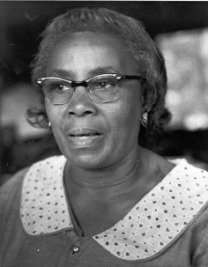1672- Fortifications.
A fort was completed at Albemarle Point. Even though plans were well underway to moving the colony to Oyster Point, security against the Spanish was still a major consideration.
1690- Politics. Religion. Slavery
Using his power as Proprietor, Seth Sothell called a Charles Town Parliament which voted to banish Governor Colleton. Citing the Fundamental Constitutions which stated “it is provided that the eldest proprietor that shall be in Carolina shall be governor,” Sothell then claimed the office of governor.
Sothell’s banishment of Colleton tempered his governing style. His administration in Charles Town was marked by substantial positive events.
- Established just treatment of disliked foreigners (Huguenots).
- Forbade supplying Indians with liquor and firearms.
- Required licenses for all liquor retailers.
- Provided for an organized militia and town watch.
- Provided a store of gunpowder.
- Granted a patent for a rice-husking machine.
- Enacted a slave code, heavily based on the Barbadian. It included a provision for punishment of anyone who killed a slave.
1718-Bloodless Revolution
Francis Yonge arrived in London to meet with the Proprietors. Yonge, a member of the Assembly, was sent to press the Colony’s case of grievances in person before the Lordships. He delivered a packet of letters written by Governor Johnson, Nicholas Trott and William Rhett. And then, Yonge waited for three months for a reply.
1780-The Seige of Charlestown.
Edward Rutledge, brother of Gov. Rutledge and signer of the Declaration of Independence, was captured by British cavalry with two other officers east of the Cooper. He was attempting to sneak out of the city with letters and communications to his brother and other officials.
GEORGE WASHINGTON’S VISIT: DAY 3
Tuesday, May 3, 1791
The president had breakfast with Elizabeth Grimke Rutledge at her home on Broad Street (John Rutledge House). Mr. Rutledge (Chief Justice of the S.C. Supreme Court) was on the Circuits and not in the city.

John Rutledge House, 116 Broad Street. Library of Congress.
Later in the day, at his lodgings, he
was visited about 2 oclcock, by a great number of the most respectable ladies of Charleston – the first honor of the kind I had ever experienced and it was flattering as it was singular.
1898
Septima Poinsette Clark was born in Charleston, the second of eight children. Her father, once a slave, encouraged her to get an education. Clark attended public school, then worked to earn the money needed to attend the Avery Normal Institute, a private Charleston school for African Americans.
 She qualified as a teacher in 1916, but since Charleston did not hire black teachers, Clark was forced to take a position at a school on John’s Island. Three years later, she was teaching at the Avery Institute and joined the NAACP in an attempt to convince Charleston to hire black teachers. Later, she moved to Columbia, and through the NAACP chapter there worked with Thurgood Marshall in a 1945 case that sought equal pay for black and white teachers. She described it as her “first effort in a social action challenging the status quo.”
She qualified as a teacher in 1916, but since Charleston did not hire black teachers, Clark was forced to take a position at a school on John’s Island. Three years later, she was teaching at the Avery Institute and joined the NAACP in an attempt to convince Charleston to hire black teachers. Later, she moved to Columbia, and through the NAACP chapter there worked with Thurgood Marshall in a 1945 case that sought equal pay for black and white teachers. She described it as her “first effort in a social action challenging the status quo.”
Septima Clark’s work was commonly under-appreciated by Southern male activists. She became known as the “Queen mother” or “Grandmother” of the Civil Rights Movement in the United States. Martin Luther King, Jr. commonly referred to Clark as “The Mother of the Movement”. Clark’s argument for her position in the Civil Rights Movement was one that claimed “knowledge could empower marginalized groups in ways that formal legal equality couldn’t.”
To read more about her remarkable life and career as a Civil Rights pioneer, go to her page on the King Institute @ Stanford University.


